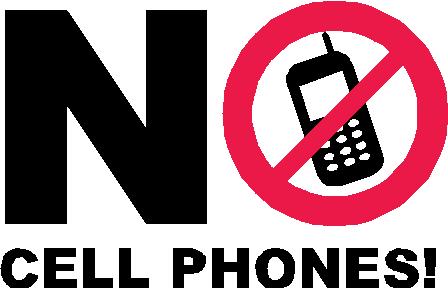The other day, the NY Times reported that NYC schools chancellor Dennis Walcott said the current cell phone ban for students is “the policy that will [continue to] be.”
Okay, but more disheartening than that was Walcott’s assertion, in response to evidence that cell phones can be used as educational tools, that, “cellphones can also be not useful in class as well.”
The law currently on the books, as per Mayor Michael Bloomberg in this article, says this: “You’ve always had the right to take a phone to school and take a phone from school. You just don’t have the right to bring it into the school, and that’s not changing.”
How chilling are those words? Never mind how didactic and authoritarian they are. Think, instead, of the ramifications such a policy has for students.
1) Anytime a large group feels oppressed, tensions will bubble beneath the surface and, inevitably, boil over. The majority of cell phone users, I’d venture, are teens. Trying to control teens can be as fruitful as trying to hold water in a sieve. It’s hard, frustrating, and in many ways, pointless. When a teen has his cell phone removed from his person first thing in the morning, schools are setting up very unfavorable attitudes toward school and authority.
2) If kids don’t have the tools they need to text each other in class, they’ll just default to the more primitive practice of passing handwritten notes. Does this therefore mean that we should confiscate paper, notebooks, pens, and pencils, too?
3) I am reminded yet again of the analogy of teaching kids proper ways to use technology. Yes, technology can be dangerous, but so can crossing the street. So, do we tell our kids not to cross the street or do we teach them ways to do so safely? The argument that cell phones can be used for bad things and that the good is not enough to outweigh that is just foolish. Should we remove Bunsen burners from chemistry labs and scalpels from biology?
4) Cell phones are not just for texting anymore. Students can use them as digital cameras. They can be tools for responding to class polls/questions like an updated version of a response card. Creative teachers might encourage students to write stories through texts or Twitter. Of course, this would be totally anti-establishment and against the status quo, so it scares people, but regardless of the medium, writing is writing.
5) Then there’s the whole element of hypocrisy. If we are to prepare our kids for a future that demands proficiency in technology, why are we telling them they can’t use one of the technologies that they are most comfortable with? It doesn’t make sense.
Mobile learning has vast possibilities and in schools around the country it is catching on. Why is NYC, which boldly, brashly, and (usually) rightly calls itself “The Greatest City on Earth,” lagging so hopelessly behind?









I LOVE the analogy of crossing the street! I really liked this post!
What will it take to get everyone on board with the fact that cell phones are not evil in schools?
What will it take? A lot of time and a lot of admitting of “Oops, we were wrong.” Two things that don’t come easily.
While I agree with the majority of this post, 5 raises an issue for students without smart phones. I’m a 21 year-old college student living on my parents’ plan (That will change as soon as I can afford to have my own plan) and they do not want data. In order to have data, and thus a smart phone, our plan requires the primary number carry the data first and then add it to additional numbers. Since my parents simply want phones that make calls and, in their case use the walkie-talkie feature, I’m out of luck because it’s a $170/month charge for just two phones of unlimited data, which is the only option the company sells. Students without smart phones could not possibly use their phones as response cards and some non-smart phones cannot access the mobile features of Twitter and Facebook (Let’s not get started on parental permission for those sites). My camera is great, but it’s a dinky 1.3 megapixels. The camera on an iPhone is 12! That’s more than the point and shoot I got in 10th grade for $200. Phones have come a long way, but not all parents have, and not all students have access to the most advanced phones.
Wow. Are you saying that it is a blanket rule across all schools in NYC – teachers can’t make a decision about allowing cell phones in their own class?
I teach in Melbourne (Australia) and my school’s official rule is that students may not use their phones in class without permission from their teacher. I’ve asked students to remember to bring their phones to my classes. Among other excellent apps, I can’t go past the camera! I write their homework on the board, ask them to take a photo and set it as their lock screen! Guaranteed that they will see the reminder a hundred times a day!
Pingback: Behind the Times and Students Suffer | From the...